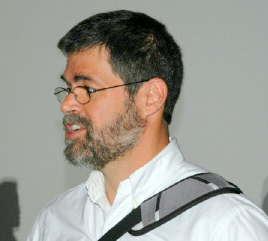Bosworth: Intelligent reaction, not intelligent design


He started by describing the old model (from five years ago) as a form of state socialism, with the Mandarins from the best schools locked in an ivory tower on a nice campus setting coming up with five-year plans, formulating big APIs and then having it built from scratch. That's a bit of an exaggeration, but you get the point. Ivory tower think, often out of touch with reality.
He described the new model as follows:
- Run like mad
- Try things out, watch, learn
- Iterate
- Learn form the customers in real-time
- Real applications, APIs to follow
"I call this intelligent reaction, not intelligent design," Bosworth said. "You have to learn and change with the times, following customers in real-time." He advised getting applications into the hands of users and then when they start screaming for APIs, provide them, which is the model the eBay, Google and now salesforce.com are following. "It’s not a science, it’s a living, breathing way to react to customer needs," Bosworth went on. "Don’t obsess about a grand plan. It doesn’t survive an encounter with reality. It’s not the clash of cymbals, but the inexorable evolution of natural selection."
The old model isn't dead, but what you can do iterating lots of releases quickly based on learning from users will ultimately be better for customers. Another element is a dynamic marketplace that spawns custom solutions and has a trust model (rating, certifying, peering under the hood) and reputation system that involves both the company and its customers, Bosworth said.
Referring to salesforce.com's Appexchange, Bosworth, a long-time friend of the company, said, "I am sure some of it is wrong. Some things that salesforce has to do for you [customers] to trust the apps we don’t understand."